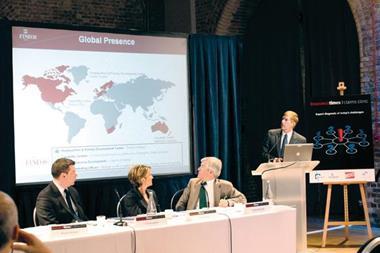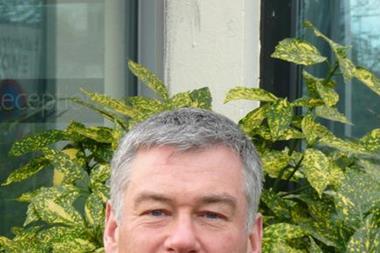Participants at the recent FINEOS roundtable debated the future of the claims process, tackling such topics as customer empathy, new technologies, credit hire and recruitment
The Fineos roundtable at the Insurance Times Leaders Forum played host to the industry’s leading figures as they grappled with the potential threats, challenges and opportunities confronting the claims process.
While many have been busy tackling the problems posed by the current economic climate, FINEOS head of claims solutions Graham Newman highlighted the importance of addressing how the key issues affecting the sector are going to evolve over the next three to five years.
CII’s past chair of the faculty of claims, and technical director of loss adjuster Cunningham Lindsey, Jonathan Clark felt that maintaining an empathetic approach when dealing with customers was a priority. He urged the industry to ensure that efficiency targets did not detract from dealing sensitively with distressed customers.
“We have to put ourselves in their shoes and understand what they are going through. That’s never easy because there is ground to be covered in terms of validating the claims and working out what the options are. And in some cases the claim might be not be covered.”
Fortis claims and operations director Rob Smale believed that insurers should try and accommodate clients’ individual needs. “Each customer and their reaction to seeking a quote or making a claim is very different. One person’s trivial inconvenience is another’s major crisis.”
Clarke compared the challenges facing claims staff to those confronting the NHS. “In some of the efficiency drives that have occurred in other emergency services, some of the things people have recognised is that it is still critical to have that bedside manner because it can make you significantly more effective.”
AXA’s head of claims, David Williams, said: “Improving our customer focus and interacting with greater empathy will help improve the efficiency of the process, as well as dramatically transforming customer service and showing that we really do care.”
Zurich’s property claims director, Anna Fleming, believed that outsourcing abroad had created some potential problems when addressing the needs of customers. She said that cultural differences could lead to misunderstandings between the claims handler and the customer. “They may be technically competent but may have a problem appearing to empathise even when they are empathetic,” she said.
Choices, choices
Aspen Re’s head of claims, Peter Rowe, added that there was scope for providing more choice for the customer when dealing with certain claims.
“It is common practice for insurers to send a designated repairer to deal with the work. I think that is not necessarily the most cost-effective way of dealing with it, and the policyholder may have their own preference. For example, they may want to use their own contractor and if that makes more sense and is quicker and more economical, then maybe we should give them that choice.”
He added: “You could let them be insured to get their own repairer or to make an actual cash settlement instead.”
Groupama’s director of claims, Phil Bird, also felt the industry should focus more on product structure. In contrast to others’ views, he felt there was too much emphasis on empathy. “There has been an awful lot of focus on customer delivery and customer service, and I think it is misplaced,” he said. “I don’t think the customer necessarily wants huge amounts of hand holding. I think they simply want good communication.”
He explained: “We structure products in a way that doesn’t necessarily work for the client. We have a lot of byzantine rules around replacement cars, for instance, that are not always easy for people to understand. To get to the bottom of the problem, we need to look at the way products are structured.”
Clark commented: “Empathy has two dimensions. One is about having a very personal interaction with the client and the second is having processes and procedures that recognise what the customer wants.”
Willis UK claims director Richard Henton felt there was scope for greater co-operation and understanding within the claims process. “Claims activity has been very adversarial,” he said. “It would be nice if we could move towards a better system of handling claims.”
Both Henton and Williams agreed there was too much emphasis on developing a perfect model immediately rather than working towards an ideal system. “We are looking for a 100% model. But it would be great if we could work towards delivering 70% now,” Williams explained.
He said the forthcoming Ministry of Justice reforms would help insurers to re-evaluate and streamline their claims processes. He added that the industry needed to have adopt a more positive view towards new legislation and view it as an opportunity.
Technology: help or hindrance?
The future role of technology in insurance emerged as a major concern. Williams emphasised that the industry needs to understand the increasing role played by the internet and technology in consumers’ lifestyles. He said that insurers should evaluate existing systems.
“Technology should not be seen as the panacea, the cure for all our woes, but we need to recognise that new and exciting technology is playing a bigger role in everybody’s lives, and the insurer that can best embed this into their strategy will be in a tremendous position of advantage. The key is to spot the technology that can really help,” he said.
Rowe pointed out that technology should not take priority over the delivery of personal service. “There is no substitute for the old-fashioned personal touch with a client. People like to think they are being treated as individuals rather than just a number in the computer system.
“For example, I think technology can help you with the claims process. But it cannot help with the actual claims negotiation and empathising with a customer and meeting their needs.”
Anna Flemming agreed. “In my view, in a traumatic situation such as a car accident, people will still want to speak to a knowledgeable person who can help.” Though, she added: “After first notification, however, there may be a shift towards email/online updates, but this will develop over time.”
Rowe pointed out that there were certain scenarios where increased investment in technology could save time and money. He said that, in a flood situation, it would create greater efficiency if a loss adjuster sent to deal with a claim was able to see if there were other claims that could be serviced in the same area.
“It would make far more sense if the loss adjuster could link into a database and see who the insurer is for the house next door. And then he could ring up the insurer and say ‘I’m actually on the spot. Do you want me to deal with the other claim?’ This would be preferable to having different insurers sending a number of loss adjusters to the same street. I think you need the technology to do that.”
Bird said that greater adoption of technology within the industry was inevitable. “One thing for certain is that you can’t stop the march of time. People are increasingly able to do their banking on their iPhone, for example. Why wouldn’t this apply to claims notification?”
He added: “The innovative and forward-thinking companies that are prepared to spend and invest the capital will lead the way.”
Smale said that technology played an important role in improving the efficiency of the claims process. “We have previously introduced an e-invoicing system with our repairers, reducing the need for paperwork and increasing the speed of payment and ultimately claim settlement. Other new methods of technology, such as the digi-pen, have also demonstrated increases efficiencies and are not something that can be ignored when delivering the best possible service to the customer.”
Clark said it was necessary to gauge customers’ needs before investing in technology. “I think we have to be clear when people want to self serve and when they don’t, and how they might want to use technology. It doesn’t need to be too complex, but it is important to know how a customer wants to deal with you and the service they are looking for.”
Future challenges
Unsurprisingly, the burning issue of credit hire also reared its head. Bird believed a solution was in sight. “I think in the end the price component that credit hire adds to the equation will eventually reach a more economic solution, whether that solution is driven by changes in legislation or something else.”
He added: “Ultimately, if it is costing too much, someone will find an answer to it. Credit hire companies will change their shape and perhaps become vehicle replacement companies.”
But Rowe felt insurers needed to take matters into their own hands. “It is apparent that the credit hire sector is running rings around the insurance industry. Insurers really need to consider whether they should build in their own form of cover or provide their own vehicles and hijack the credit hire process in some way.”
Williams shared this hope. “I dream of a future where there is no credit hire. It would be great if customers and third parties were placed in a suitable vehicle promptly and efficiently at a cost that helps us improve pricing to the man on the street, and without forcing unsuspecting members of the public to sign up to credit agreements they little understand.”
However, Smale felt that progress had already been made when it came to the relationship between insurers and credit hire operators (CHOs). “Credit hire is here to stay, but the environment is changing. Many people’s thoughts about credit hire are based on old-world data. In the past year, times have changed for CHOs and we at Fortis are finding it very easy to talk sensibly to most of them.”
Meanwhile, the subject of recruitment was broached. All agreed on the importance of raising the profile of the insurance industry and attracting more talented entrants. “You can have great technology, but you need to have good people to use it. It is important that we never lose sight of that,” Clark said.
“We all understand we are in a people business. We need to make the industry more attractive. It is about giving people role models and letting them see the opportunities that are there. It is about seeking individuals that the industry can bring the best out of. We need talented people, and there are talent pools out there that we need to go after.”
Williams added that the industry should promote the tremendous variation in roles within insurance and the positive impact people can have by joining the industry.
“By working in insurance, people have helped keep the economy turning: people protected in their homes, and businesses up and running. We need better case studies and to get our successful younger people to spread the word in universities and elsewhere,” he said. IT
Hosted by comedian and actor Tom Allen, 34 Gold, 23 Silver and 22 Bronze awards were handed out across an amazing 34 categories recognising brilliance and innovation right across the breadth of UK general insurance.













































No comments yet